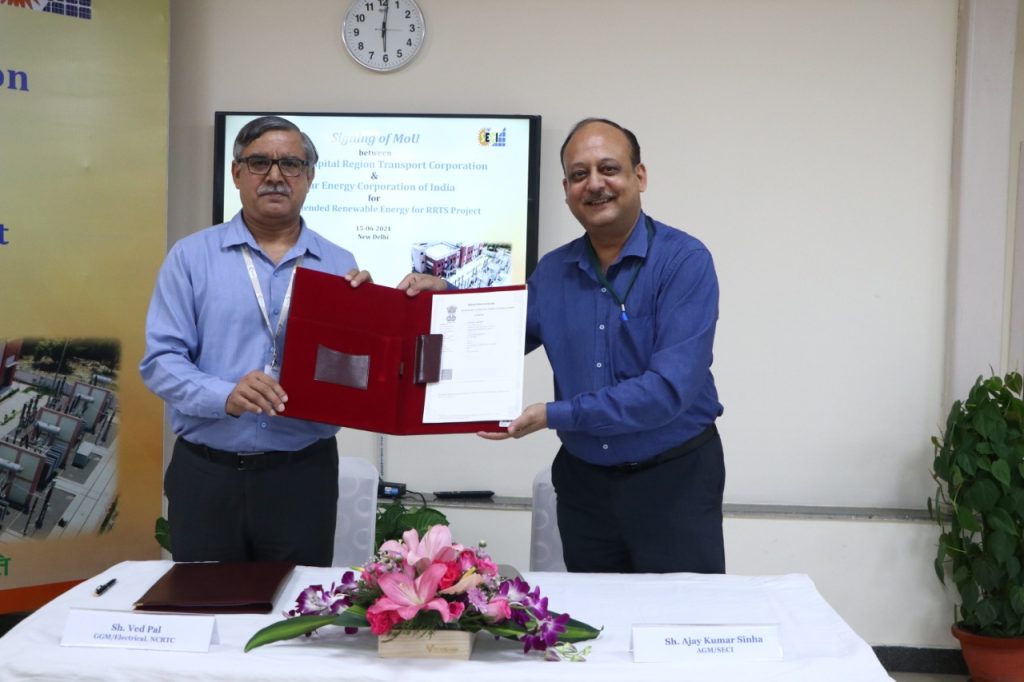In line with its vision to improve the quality of life of people, NCRTC has signed MoU with SECI (Solar Energy Corporation of India) today to harness blended renewable energy for RRTS. MOU has provisions to explore possible opportunities in electric/ transformative mobility, Hydrogen based economy, and other alternative sources of fuels and energy.
MoU was signed in presence of Shri Jatindra Nath Swain IAS, Secretary (Fisheries), GOI & CMD/SECI, Shri Vinay Kumar Singh, Managing Director/NCRTC and Shri Mahendra Kumar, Director(E&RS)/NCRTC alongwith other senior officials of NCRTC and SECI.
NCRTC, as part of its Energy Management Policy, intends to maximize the use of blended renewable energy such as solar power etc. for meeting full energy requirement of NCRTC. SECI, being an industry leader, will help in arranging blended renewable energy to NCRTC round the clock at affordable rates for Delhi-Ghaziabad-Meerut Corridor and cooperation to extend the same for other future corridors.
Use of clean energy, through this association will ensure reduction in expenditure on electricity and significantly lesser CO2 emissions, which is essential for sustainable development.
This cooperation is a part of NCRTC’s long term strategy to make RRTS and NCRTC financially as well as environmentally sustainable.
NCRTC is adopting following measures also for energy efficiency in India’s first RRTS corridor-
1. All elevated RRTS stations and depots will be provided with solar panels.
2. NCRTC is targeting to generate minimum 10 MW renewable energy.
3. 40% of the total energy requirement of Delhi Meerut RRTS corridor is targeted to be procured/generated from renewable energy.
4. RRTS rolling stock will be provided with state-of-the-art regenerative braking system which converts train’s kinetic energy into electrical energy..
5. Regenerative braking will result in reduced wear and tear of wheels, brake pads and other associated moving brake-gear parts of rolling stock resulting in significantly less consumption of these spare part/items during train maintenance life cycle which again will result in substantial reduction in CO2 emission which otherwise would have been generated in the manufacturing and supply chain process of these spare parts/items.
6. RRTS trains will have push buttons for selective opening of doors on need basis. This eliminates the requirement of opening all doors at every station, thus leading to energy saving. RRTS rolling stock will have lighting and temperature control systems to enhance the passenger experience with less energy consumption.
7. All RRTS station and their premises, depot, office spaces and trains will be equipped with energy-saving LED lights.
8. Platform Screen Doors will be installed at every RRTS stations that will help in saving significant energy consumption in underground stations.









